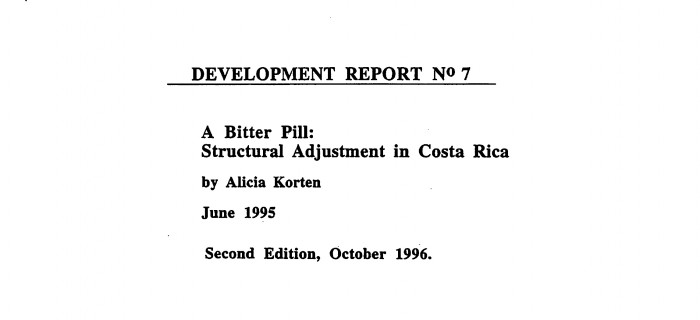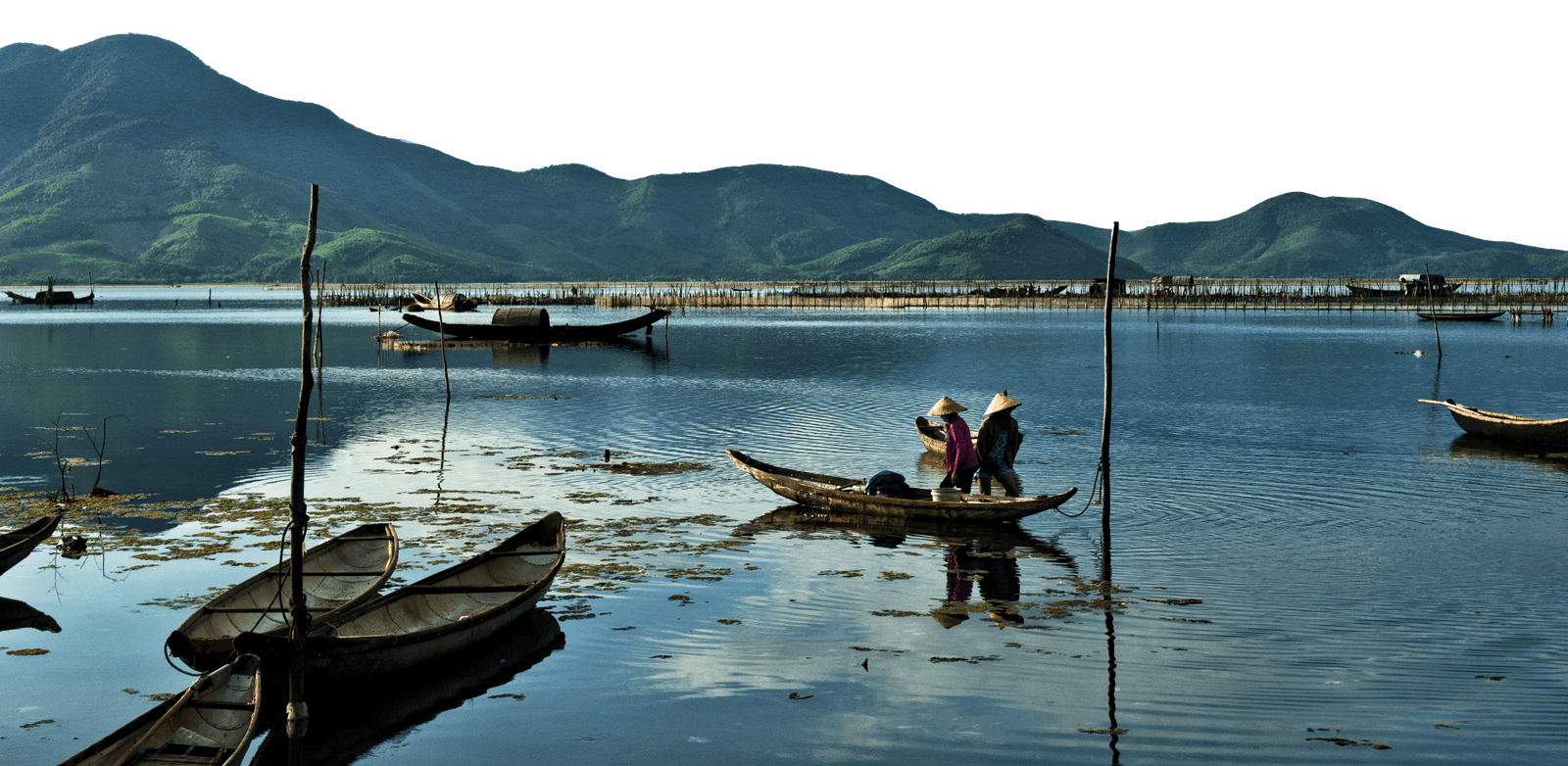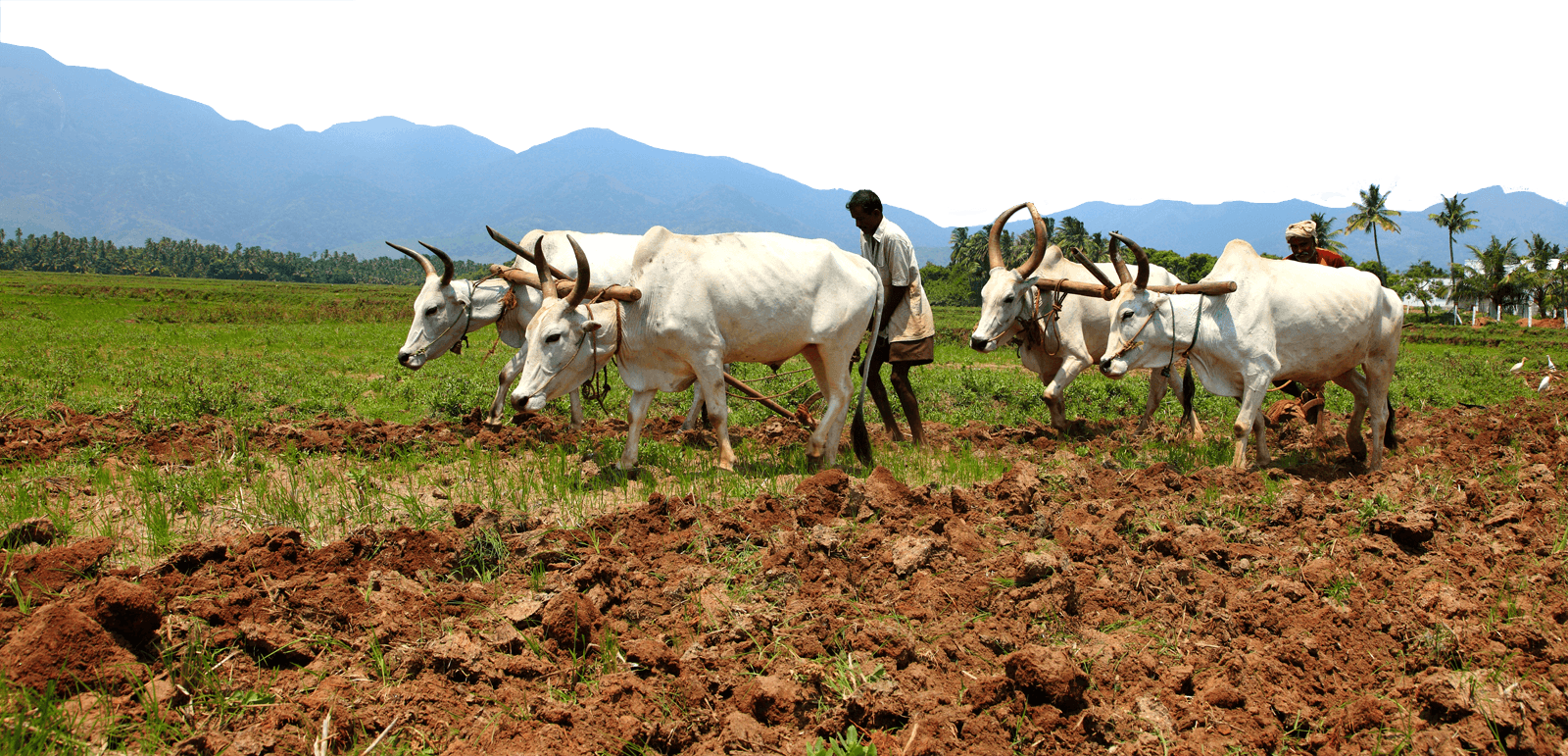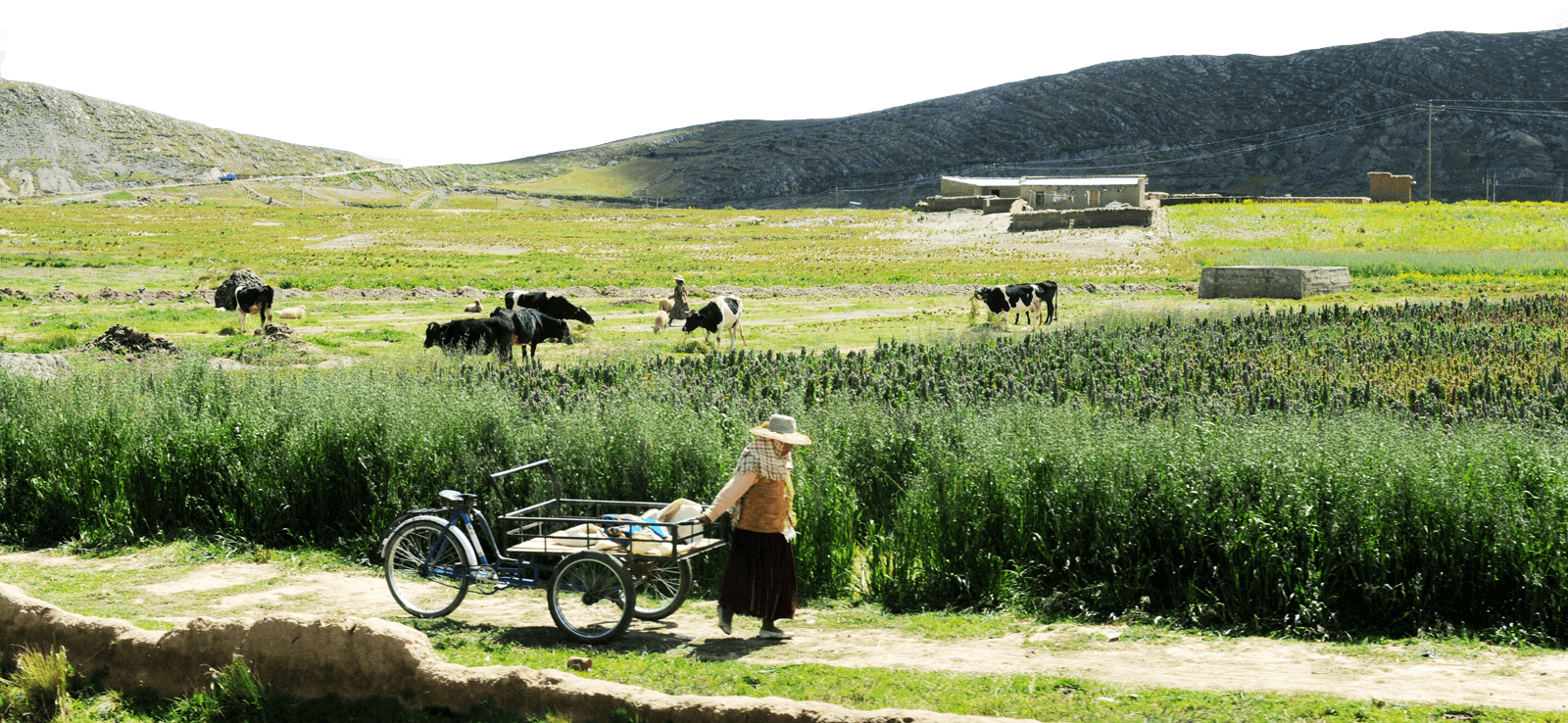A Bitter Pill: Structural adjustment in Costa Rica
By Alicia Korten, June 1995, Development Report No. 7
Executive Summary
In 1980 Costa Rica found itself in the midst of an economic crisis. As the price of its imported oil had risen and the price of its agricultural exports had fallen, the country’s trade deficit widened and its credit rating plunged. To obtain the foreign exchange it needed, the country, already in debt, requested the international banking community to increase its lending. The International Monetary Fund and the World Bank agreed to provide such loans on condition that the government restructure the nation’s economy. A primary goal was to narrow the trade gap by boosting the country’s exports; success in exports was expected eventually to enable the country to reduce its debt. Ten years later the International Monetary Fund and the World Bank were touting Costa Rica as a demonstration of the success of its economic medicine.
The Costa Rican experience deserves critical examination for two reasons. As a country with long-standing democratic traditions, relatively high levels of education and health, and no standing military. Costa Rica provided an unusually benign environment for structural adjustment and consequently helps reveal what might be the best that could be expected from such policies. Also, since it was one of the first countries to implement structural adjustment policies, Costa Rica’s experience helps reveal where such policies lead over time.
Under its structural adjustment program, Costa Rica has promoted exports by shifting governmental subsidies from products consumed within the country to those exported to foreign markets. Export industries have received tax exemptions and infrastructure support, while corn, bean and rice farmers lost their government sponsored credit and price supports. Small grain farmers were urged to switch to export products such as ornamental plants, strawberries and red peppers produced for foreign markets.
Under structural adjustment, export industries received support while corn, bean and rice farmers lost their government sponsored credit and price supports. Small grain farmers were urged to switch to products produced for foreign markets.
A review of Costa Rica’s experience reveals a mixed picture. The policies have been successful in boosting exports. Between 1980 and 1992, sales of traditional export crops (coffee, bananas, meat and sugar) had risen by 34 percent and non-traditional exports had increased by 123 percent. The policies have also increased wages and stabilized unemployment. Real wages increased five percent between 1980 and 1990, and unemployment, which historically had run at 3 to 4 percent, then skyrocketed to 9.1 percent in 1982, had stabilized by 1990 at 5 percent. For advocates of structural adjustment, these statistics have been indications of resounding success.
The policies, however, did not solve the fundamental economic problem they were intended to address the country’s gap between exports and imports. The average gap in the 1970s between imports and exports was $234 million; by 1992, despite the growth of exports, the gap had widened to $531.8 million. Part of the problem was that the production of exports required substantial imports; another part was that structural adjustment policies required a reduction of tariffs on imported goods, which increased the flow of luxury goods into the country.
Stay in the loop with Food First!
Get our independent analysis, research, and other publications you care about to your inbox for free!
Sign up today!Nor have the policies solved Costa Rica’s debt problems. To fill the foreign exchange gap caused by its sustained excess of imports over exports, the country continued to borrow heavily. In 1980 the country’s debt stood at $2.7 billion; by 1983 it had risen to $4.2 billion, and in 1991, despite a $1 billion debt forgiveness package, it remained at $4.1 billion. Costa Rica’s per capita debt thus remains one of the highest in the world, despite its long-term program of structural adjustment.
The export-oriented policies also encouraged the rapid depletion of the country’ s natural resources. A natural resources accounting analysis conducted by the World Resources Institute revealed that between 1970 and 1982, the annual rate of decline in the value of the country’s soils, fisheries and forests was $149 million while between 1983 and 1989, the decline more than doubled to $317 million.
The debt has not decreased in part because the government has been increasing its subsidies to the export sector while reducing government revenue from this sector. For example, between 1985 and 1992 the central government spent $326.1 million on a tax rebate certificate (CATs) for non-traditional exports. Meanwhile, between 1983 and 1992 annual export tax revenues plummeted from $121 to $42 million.
As state funds dwindled, the government was forced to institutionalize what was once thought of as a temporary contraction in social service expenditures. Between 1980 and 1988 social service allocations fell from 46.4 to 41.1 percent of the total government budget, causing deterioration in the educational and health care systems. Gross primary and secondary enrollment rates declined 8.5 percent between 1980 and 1987, and infectious and malnutrition-related disease rates increased. In contrast to the declining social service budgets, the budget for the police increased. Between 1980 and 1989, the police force had grown from 6,000 to 7,800. In 1992 the state approved funds for an additional 2,500 police officers.
The structural adjustment policies were also fundamentally changing the nature of jobs, lifestyles and asset control in the country. The export promotion strategies favored large foreign investors over small local business people, who rarely had the contacts within international markets or access to international transport systems necessary to sell in foreign markets. The export products generally required higher capital investments and more complicated production processes than goods sold domestically. Consequently, control over Costa Rica’s assets was becoming increasingly concentrated in the hands of large foreign corporations.
One of the biggest impacts of the new policies was on the small farmer class. Although no reliable direct data on the number of small farmers exists, one indicator of the scope of their decline is the number of farmers selling produce to the National Production Council, a state apparatus established to buy all the country’s basic grains. In 1984, 70,000 farmers sold grain to the Council, while by 1989 that number had dropped to 27,700.
Those working on more equitable and sustainable models have stressed the need for popular participation in shaping the country’s economic future, widespread distribution of the country’s assets, and the promotion of economic systems that cater to small businesses that use environmental resources in a sustainable manner.
The testimonies of small farmers give further evidence of the shift in asset control that has occurred and what it has meant for people’s lives and the environment. Farm families from the community of La Estrella who had sold their land to an orange juice export company followed a variety of different paths after leaving the area. Some migrated to the cities; others worked on agricultural export plantations; still others squatted illegally on other peoples’ land. Regardless of their new circumstances, each of these families felt unhappy with their new choices. This was true even for those whose incomes had increased. Such increases rarely made up for the many nonmonetized benefits of life on a robust farm. They felt the change had increased the instability in their lives and had encouraged the breakdown of family and community. Some, particularly those exposed to pesticides on plantations, felt their health was at risk. Above all, these individuals lamented the loss of the farming culture that had provided meaning to their lives. They also regretted that the land sales had taken stewardship of the region’s natural resources away from local communities with a long-term interest in preserving the environment and placed it in the hands of a transnational company with little commitment to the area.
While the International Monetary Fund and the World Bank have viewed Costa Rica as a structural adjustment success story, many Costa Ricans have considered the policies a failure—undermining the country’s democratic traditions, its natural resource base and its financial future. They are actively working on alternatives—seeking to avoid both the failures of the country’s earlier import substitution model and the country’s current export-led growth model. Both models, they note, have sought to westernize the country, allowing some of its citizens to consume at a level on a par with developed countries. Both have also ignored the unequal distribution of the country’s natural and financial resources.
Those working on more equitable and sustainable models have stressed the need for popular participation in shaping the country’s economic future, widespread distribution of the country’s assets, and the promotion of economic systems that cater to small businesses that use environmental resources in a sustainable manner. They have stressed the need to balance production for local, regional and international markets—meeting the basic needs of Costa Ricans before exporting natural resources to satiate the wants of foreign consumers and providing profits for transnational corporations. They have also advocated simpler lifestyles among the upper classes, more in keeping with the country’s limited resource base and its struggle to close its trade gap. Such a development strategy would be less glamorous than the “quick profit promise” of the current trade regime. However, it may be the only means toward a truly sustainable and equitable future for the country.


 Help Food First to continue growing an informed, transformative, and flourishing food movement.
Help Food First to continue growing an informed, transformative, and flourishing food movement.




